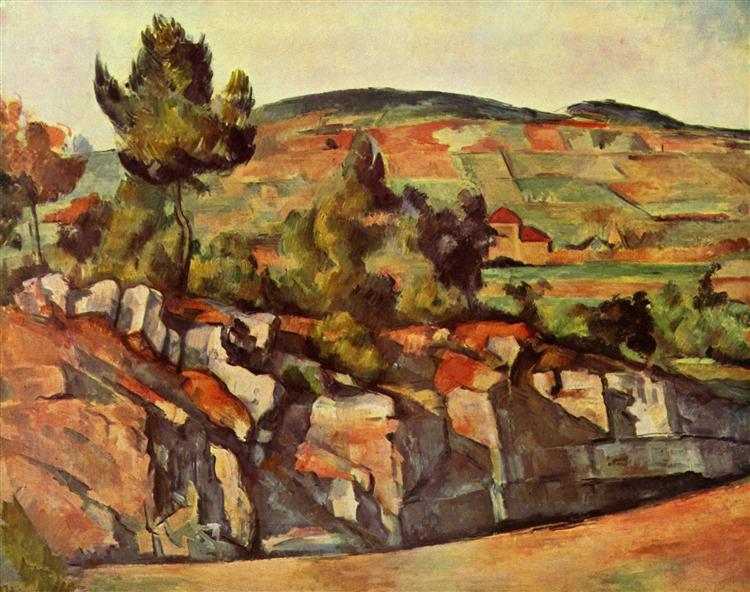Description
Paul Cézanne's painting "Mountains in Provence", painted in 1890, stands as a vivid testimony to the artist's move towards using colour and form as vehicles of emotional rather than merely descriptive expression. In this work, Cézanne presents us with a mountainous landscape which, although anchored in naturalistic representation, is also imbued with a sense of structure and order, essential characteristics of the development of his style.
The composition is shaped by a deeply meditative organization. The mountains, which dominate the upper part of the painting, are arranged in a format that gives the viewer an impression of monumentality, while the countryside in the foreground provides a balance that anchors the eye. The solid structure of the mountains, captured with a series of brushstrokes that seem almost modular, suggests the idea that each form is part of a larger whole, a principle that Cézanne would explore consistently throughout his career. The two-dimensionality of the work is also reinforced by the use of color, which is strategically deployed to keep the viewer within the picture plane, moving them away from a purely three-dimensional focus.
The color palette in Mountains in Provence is crucial to understanding the artist's intention. Cézanne uses hues ranging from deep blues to warm ochres, creating a dialogue between the serenity of the sky and the roughness of the earth. This color choice resonates with the geography of Provence, creating an atmosphere that evokes both sunlight and the shadows of the hillsides. The way the color is applied in layers, almost like a mosaic, emphasizes the texture of the landscape and reflects the influence that nature had on the artist, who was constantly searching for a deeper sense of place and perception.
Also notable is the absence of humanoid characters in this work, a trait that governs much of Cézanne’s output in his landscapes. Through this exclusion, he lets the surroundings speak for themselves. The mountains, vegetation and sky become protagonists, representing a self-contained world that allows the viewer to reflect on their own relationship with nature. This focus on landscape aligns with Cézanne’s interest in geometry and how natural forms can be dissected and grouped in ways that challenge conventional perception.
Cézanne's style, often described as a bridge between Impressionism and Cubism, finds in "Mountains in Provence" a clear representation of his exploration of the internal structure of forms and perspective. Cézanne was dedicated to the idea that color and form are inseparable and, in this painting, he evidences his rejection of the romantic idealization of the landscape, proposing instead a rawer and more authentic vision.
This work also fits into the broader context of Cézanne's career, as he produced numerous landscape compositions in Provence. The region was not only his home, but also acted as his inexhaustible source of inspiration. From these landscapes, he developed a personal pictorial language, designed to capture the immediacy and vibrancy of the natural environment.
In short, “Mountains in Provence” is a work that encapsulates Paul Cézanne’s mastery in his attempt to synthesize color, form, and emotion into a single image. This painting is not only a window into Provence, but also into the artist’s psyche, a reflection of his struggles and his search for truth in art. Through his gaze, Cézanne transforms a simple landscape into a vibrant dialogue between man and nature, inviting each viewer to question and contemplate their own connection to the world around them.
KUADROS ©, a famous painting on your wall.
Hand-made oil painting reproductions, with the quality of professional artists and the distinctive seal of KUADROS ©.
Painting reproduction service with satisfaction guarantee. If you are not completely satisfied with the replica of your painting, we will refund 100% of your money.

